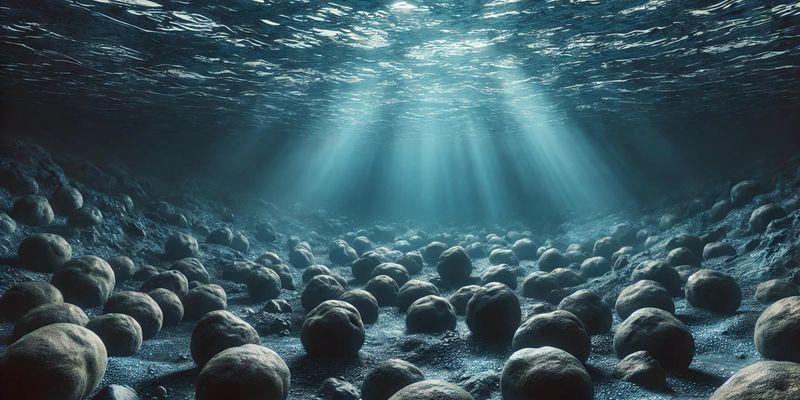Deep beneath the waves, far from the light-kissed surfaces where marine plants thrive through photosynthesis, scientists have made a groundbreaking discovery that could reshape our understanding of Earth’s life-support systems. Dubbed “Dark Oxygen,” this phenomenon centers around the surprising revelation that significant amounts of oxygen are being produced in the dark abyss of our oceans. Contrary to long-held beliefs that nearly all of Earth’s oxygen stemmed from photosynthetic processes, new research shows that the ocean’s depths play a pivotal role in sustaining life on the planet.
The Traditional Oxygen Narrative
Traditionally, it has been understood that oxygen, the breath of life for almost all organisms on Earth, primarily comes from two sources: terrestrial plants and marine algae. These photosynthetic processes, fueled by sunlight, split water molecules into oxygen and hydrogen, releasing oxygen into the air and oceans. Until now, it was believed that nearly half of the planet’s oxygen originated from oceanic photosynthesis performed by phytoplankton and other marine plants.
A Revolutionary Discovery in Oceanic Depths
However, the latest scientific explorations have revealed a novel and unexpected source of oxygen. Researchers have discovered that metallic nodules scattered across the ocean floor possess the unique ability to split seawater (H2O) into hydrogen and oxygen, a process previously unknown to occur naturally without sunlight. These nodules, often the size of potatoes, are abundant in areas like the Clarion-Clipperton Zone, making them key players in a previously unseen oxygen production mechanism.
How Dark Oxygen is Produced
The process involves a series of chemical reactions facilitated by these metallic nodules, which contain various metals such as manganese, nickel, and cobalt. When seawater comes into contact with these nodules, a catalytic reaction occurs. The metals in the nodules effectively “split” the H2O molecules, freeing oxygen and hydrogen. This oxygen then contributes to the breathable atmosphere, while the hydrogen either forms compounds or rises to the ocean’s surface.
Implications of the Discovery
This discovery not only expands our understanding of where Earth’s oxygen supply comes from but also highlights the ocean floor as a crucial component of the global ecosystem. The presence of these oxygen-producing nodules suggests that our oceans’ health, particularly the untouched depths, is more integral to terrestrial life than previously appreciated.
Furthermore, this revelation prompts a reevaluation of marine conservation priorities. Protecting these deep-sea environments is not only about preserving biodiversity but also about safeguarding the very processes that sustain life on Earth.
The Bigger Picture
In light of these findings, scientists are now pondering the broader implications for understanding other planetary bodies in our solar system. If such processes can occur in the dark ocean depths on Earth, similar mechanisms might be possible on planets like Europa, a moon of Jupiter, which is believed to have subsurface oceans.
A Breath of Fresh Air
As we continue to explore the mysteries of our blue planet, this discovery serves as a breath of fresh air in the scientific community. It reminds us that Earth still has many secrets waiting to be uncovered and that sometimes, the truth is deeper than the light can reach.
Let’s dive deeper, keep our minds open, and our research robust, as we explore the ocean’s hidden mysteries and their profound impact on our lives. It turns out, Bikini Bottoms might not be as fictional as we thought—our ocean floors are bustling with life-supporting processes that could be key to understanding the universe itself. So, next time you take a breath, remember that it might just be a gift from the deep, dark ocean.










